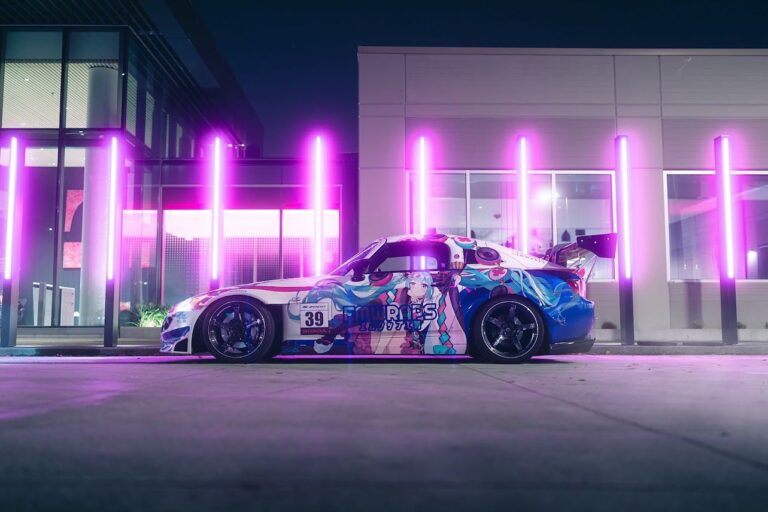
The History and Art of Itasha: Embracing Otaku Culture on Wheels
Itasha, starting in 1990s Japan, transforms cars into animated art, showcasing characters like Hatsune Miku in vivid, eye-catching designs.
In the realm of window tinting, technological advancements have ushered in a new era of materials and techniques that far surpass traditional methods. Among these, nano carbon window tint has emerged as a frontrunner, offering a suite of benefits that not only enhance the aesthetics of vehicles and buildings but also provide functional advantages that are hard to ignore. This article explores the superior advantages of nano carbon window tint, making a compelling case for its selection over other types of tints.
At the core of nano carbon tint’s appeal is its exceptional ability to block ultraviolet (UV) rays. The nano-scale carbon particles embedded in the film create a dense, impenetrable layer that effectively filters out up to 99% of harmful UV radiation. This is crucial, as prolonged exposure to UV rays can lead to the fading of vehicle interiors, deterioration of building furnishings, and, more critically, potential health risks like skin cancer.
Beyond UV protection, nano carbon tints excel in heat rejection. These tints can significantly reduce the amount of solar heat transmitted through windows, thereby maintaining a cooler and more comfortable interior environment. This heat reduction is not only a matter of comfort but also translates into energy savings, as it lessens the reliance on air conditioning systems.
Durability is another hallmark of nano carbon window tint. Unlike dyed or metallic tints, which can fade or corrode over time, the carbon particles in nano carbon tints are inherently stable and resistant to fading. This stability ensures that the tint remains effective and maintains its aesthetic appeal for an extended period. This longevity is a cost-effective feature, as it minimizes the need for frequent replacements.
Aesthetically, nano carbon tints offer a rich, matte finish that exudes elegance and sophistication. Unlike metallic tints, which can sometimes create a reflective or mirrored appearance, nano carbon tints provide a sleek, understated look that enhances the overall appearance of vehicles and buildings. This visual appeal is a significant factor for many consumers and architects seeking to boost the curb appeal of their assets.
In today’s connected world, the interference of electronic signals by window tints can be a frustrating drawback. Nano carbon window tints address this issue effectively. Unlike metallic tints, which can disrupt radio, cellular, and GPS signals, nano carbon tints are non-metallic and therefore do not interfere with electronic communications. This feature is particularly beneficial for vehicle owners who rely on uninterrupted connectivity for navigation, entertainment, and communication.
The strength and thickness of nano carbon tints also contribute to increased safety. In the event of an accident or break-in attempt, these tints can hold shattered glass together, reducing the risk of injury from flying glass shards. Additionally, the opacity of these tints provides a level of privacy, preventing outsiders from easily viewing the interior of a vehicle or building.
In the context of environmental impact, nano carbon window tints are a more sustainable option. By reducing heat transmission, they decrease energy consumption, which, in turn, lowers greenhouse gas emissions associated with air conditioning. Moreover, the durability of nano carbon tints means less frequent replacements and, consequently, less waste.
While the initial investment in nano carbon window tint might be higher than traditional tints, its cost-effectiveness is evident in the long run. The combination of durability, energy savings, and minimal maintenance requirements make it a financially prudent choice over time.
One of the less discussed but significant benefits of nano carbon tints is their versatility. They come in various shades and levels of opacity, allowing for customization according to individual preferences and legal requirements. This adaptability makes them suitable for a wide range of applications, from personal vehicles to commercial buildings.
Nano carbon window tint stands out as a superior choice for those seeking a blend of functionality, aesthetics, and sustainability. Its ability to block harmful UV rays, reduce heat, and provide a durable, elegant finish, all while ensuring signal clarity and environmental friendliness, makes it a smart investment for the discerning consumer. As technology continues to evolve, nano carbon window tint is poised to remain at the forefront of the window tinting industry, offering a solution that is not just about looks but about living and working in a safer, more comfortable, and energy-efficient environment.

Itasha, starting in 1990s Japan, transforms cars into animated art, showcasing characters like Hatsune Miku in vivid, eye-catching designs.

Part 2 of Ferrari Racing Days 2022: High-Octane Thrills and Unforgettable Victories at Daytona Speedway

A thrilling events of Ferrari Racing Days at Daytona International Speedway. Highlights include intense races in the Coppa Shell and Trofeo Pirelli categories,